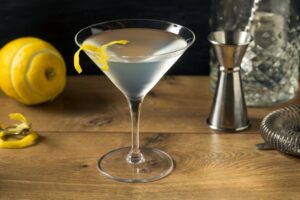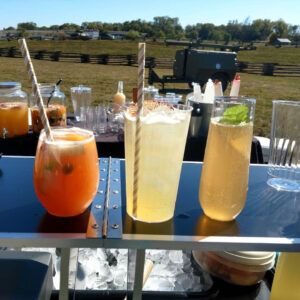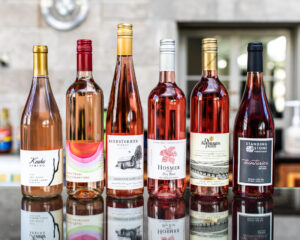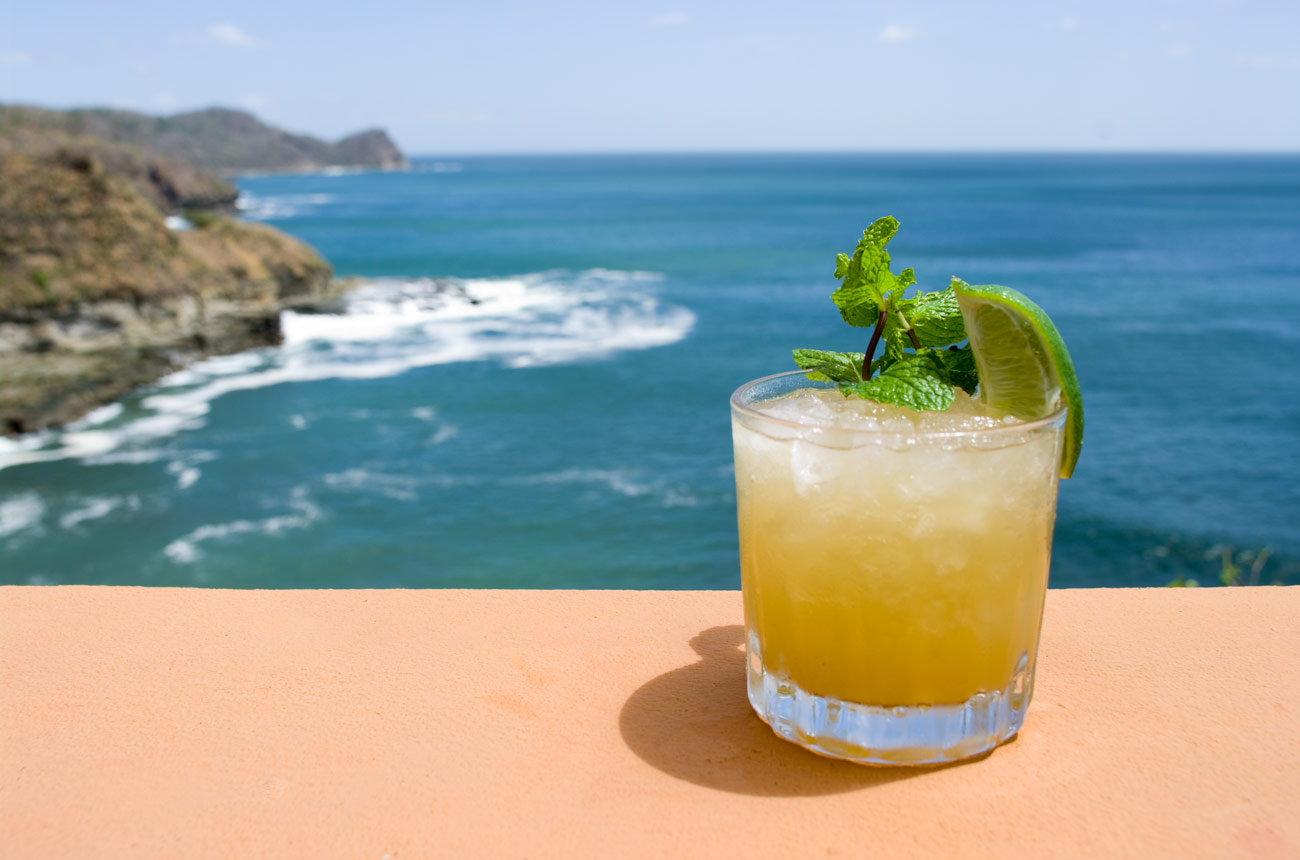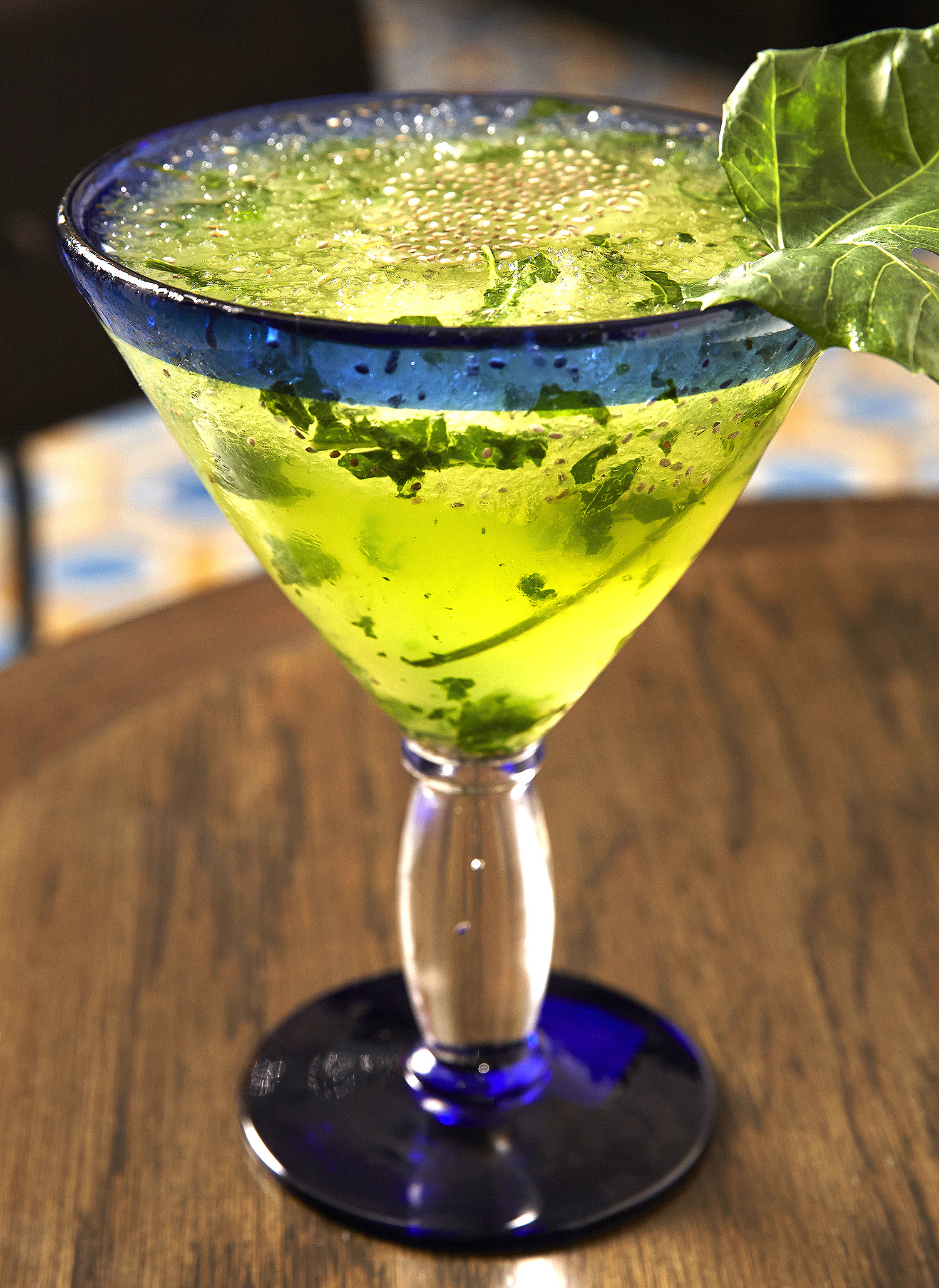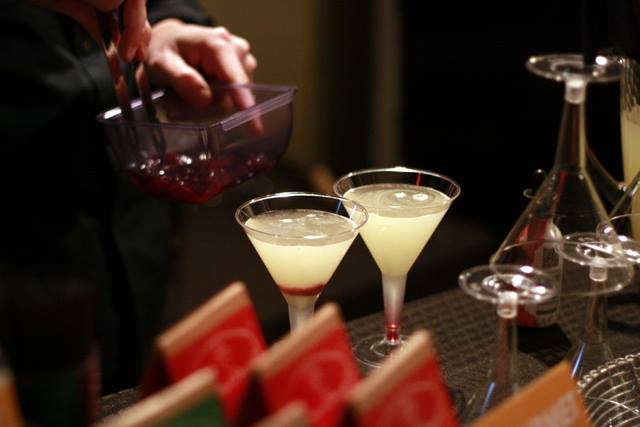MARTINIS
The first question you should ask is – Would you like it “Straight Up” or “On the Rocks”?
Next question – Do you prefer Gin or Vodka? Based on response, offer a ‘call’ brand (Beefeater gin or Absolut vodka) and ‘premium’ brand (Tanqueray No. Ten gin or Grey Goose vodka).
If requested straight-up, all martinis go into a chilled cocktail glass or coupe glass and are stirred, not shaken, unless requested shaken. Essentially due to increased dilution leading to subdued spirit, ice chips, presentation – lack clarity, and classic way of serving. You can achieve same amount of chill by stirring a little longer than shaking. Suggest a side of used rocks from mixing for hydration and extra chill. If requested ‘on the rocks’, build ingredients in an ice-filled rocks glass.
*Ratio of ingredients are the same for straight-up or on the rocks*. If Ingredients don’t all fit in the rocks glass, pour less vermouth/more spirit. All martinis should = 3 oz total volume and should never reach the rim of glass. Of course, after stirring or shaking, it will be a little over 3 oz, but shouldn’t be overfilled. If you have a larger martini glass, inform the guest so they don’t think you are underpouring them.
Grab my book to read a lengthy discussion on “The Martini”

Standard Martini recipe
- 2 ½ oz Gin or Vodka (Bombay or Belvedere)
- ½ oz Dry Vermouth
- Garnish with olives on a pick or skewer (lemon twist/lemon peel upon request)
- Chilled cocktail glass or coupe or larger rocks glass
Prep for straight-up martinis –
- Chill cocktail glass or coupe with ice and soda water and set aside if glass isn’t chilled. If already chilled, leave in the fridge until ready to pour.
- Grab a mixing glass, not silver tin, and add one scoop of ice. The reason for just 1 scoop is because of the surface area of liquid to ice (chilling ease) and the fact that you are stirring. Same concept as using a large ice cube for a spirit on the rocks. Add vermouth and spirit and stir gently with a long bar spoon for 20 seconds clockwise and counterclockwise.
- Grab cocktail glass. Using a julep strainer (curved strainer with holes), strain contents into cocktail glass. Garnish olives or lemon twist and serve immediately. If lemon twist or peel, rub the rim with skin from 12 o’clock to 6 o’clock. Twist over drink to release the oils and drop in.
- To make lemon twist, use a channel knife around the width of lemon and curl around finger to create a twist. To make lemon peel, use a vegetable peeler and cut off a three-inch skin.
- Always place a cocktail napkin in front of the guest. Some guests request a side of the used rocks from the mixing glass. Add to a rocks glass and serve.
- If requested ‘shaken’, add full ice to the mixing glass, and shake with silver tin for 10-15 seconds. Using a hawthorne strainer (springs), strain contents from mixing glass into cocktail glass, garnish, and serve immediately.
Prep for martinis ‘on the rocks’ –
- Build ingredients in an ice-filled rocks glass, stir gently with bar spoon for 10 seconds, add garnish and straw, and serve.
Dry Martini
- 2 ¾ oz Gin or Vodka (Tanqueray or Ketel One)
- ¼ oz Dry Vermouth
- same garnishes and glassware
Extra Dry Martini
- same as Dry Martini with just a splash of dry vermouth
Bone Dry Martini
- no vermouth/all spirit. Guests will say “no vermouth”
Wet Martini
- 2 oz Gin or Vodka
- 1 oz Dry Vermouth
- same garnishes and glassware
Gimlet
- Standard Martini with fresh lime juice instead of dry vermouth. Same ratio as standard martini. Garnish lime slice.
Gibson
- Standard Martini with cocktail onions as garnish. Same ratio as standard martini.
Dirty Martini
- 2 oz Gin or Vodka (usually vodka)
- ½ oz Dry Vermouth
- ½ oz olive brine (store bought, not strained from olive jar)
- Garnish with olives on a pick or skewer (no lemon twist)
* For extra dirty/very dirty, eliminate dry vermouth and add another ½ oz of olive brine
In & Out Martini
- Add ½ oz dry vermouth to the chilled cocktail glass and swirl around to flavor the glass and dump. Or add ½ oz dry vermouth to mixing glass with ice and stir to flavor the ice, then strain out. Make martini as you would with Bone Dry Martini (3 oz spirit).

MANHATTANS
The first question you should ask is – Would you like it “Straight Up” or “On the Rocks”?
Next question – What kind of whiskey would you like? Bourbon, Rye, Blended, Scotch, Irish…..Based on response, offer a ‘call’ brand (Bulleit or Crown Royal) and ‘premium’ brand (Angel’s Envy or Jefferson’s ). If no preference, use Bourbon
If requested straight-up, all Manhattans go into a chilled cocktail glass or coupe glass and are stirred, not shaken, unless requested shaken. Will explain the reasons separately. If requested ‘on the rocks’, build ingredients in an ice-filled rocks glass.
*Ratio of ingredients are the same for straight-up or on the rocks*. If Ingredients don’t all fit in the rocks glass, pour less vermouth/more spirit. All Manhattans should = 3 oz and should never reach the rim of glass. Of course, after stirring or shaking, it will be a little over 3 oz, but shouldn’t be overfilled. If you have a larger cocktail glass, inform the guest so they don’t think you are underpouring them.

Standard Manhattan recipe
- 2 ½ oz Whiskey (Knob Creek Bourbon or Michter’s Rye)
- ½ oz Sweet Vermouth
- 2-3 dashes of Angostura bitters or orange bitters (orange is my preference)
- Garnish with luxardo cherry on a pick or skewer (lemon twist/peel upon request)
- Chilled cocktail glass or coupe or larger rocks glass
Prep for straight-up manhattans –
- Chill cocktail glass or coupe with ice and soda water and set aside if glass isn’t chilled. If already chilled, leave in the fridge until ready to pour.
- Grab a mixing glass, not silver tin, and add one scoop of ice. The reason for just 1 scoop is because of the surface area of liquid to ice (chilling ease) and the fact that you are stirring. Same concept as using a large ice cube for a spirit on the rocks. Add vermouth, spirit, and bitters and stir gently with a long bar spoon for 20 seconds clockwise and counterclockwise.
- Grab cocktail glass. Using a julep strainer (curved strainer with holes), strain contents into cocktail glass. Garnish luxardo cherry or lemon twist and serve immediately. If lemon twist, rub the rim with skin from 12 o’clock to 6 o’clock.
- Twist over drink to release the oils and drop in.
- To make lemon twist, use a channel knife around the width of lemon and curl around finger to create a twist. To make lemon peel, use a vegetable peeler and cut off a three-inch skin.
- Always place a cocktail napkin in front of guest. Some guests request a side of the used rocks from the mixing glass. Add to a rocks glass and serve.
- If requested ‘shaken’, add full ice to the mixing glass, and shake with silver tin for 10-15 seconds. Using a hawthorne strainer (strainer with springs), strain contents from mixing glass into cocktail glass, garnish, and serve immediately.
Prep for manhattans ‘on the rocks’ –
Build ingredients in an ice-filled rocks glass, stir gently with a bar spoon for 10 seconds, add garnish and straw, and serve.
Dry Manhattan
- 2 ½ oz Whiskey (Bulleit or Blanton’s Bourbon)
- ½ oz Dry Vermouth
- 2-3 dashes of Angostura or orange bitters
- Garnish lemon twist or peel, not cherry, same glassware
Perfect Manhattan
- 2 ½ oz Whiskey
- ¼ oz Dry Vermouth
- ¼ oz Sweet Vermouth
2-3 dashes of Angostura or orange bitters
- same garnishes and glassware
Rob Roy
- 2 ½ oz Scotch Whiskey (Dewars or Ardbeg)
- ½ oz Sweet Vermouth
- 2-3 dashes of Angostura or orange bitters
- same garnishes and glassware
Perfect Rob Roy
- 2 ½ oz Scotch Whiskey
- ¼ oz Dry Vermouth
- ¼ oz Sweet Vermouth
- 2-3 dashes of Angostura or orange bitters
- same garnishes and glassware
Martini & Manhattan drinkers are often very specific. They will tell you how they want it. If not, adhere to these rules. Flavored martinis are always shaken, i.e. Cosmopolitan. Flavored martinis always have some mixer/juice, modifier, and liqueur. Will discuss them separately.….Cheers. Michael

